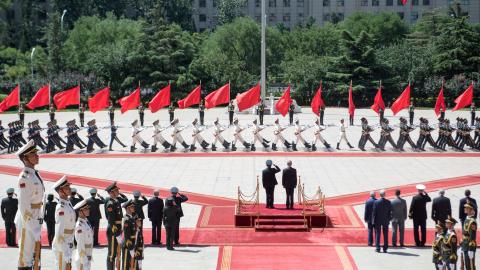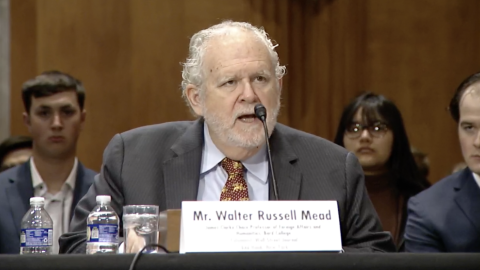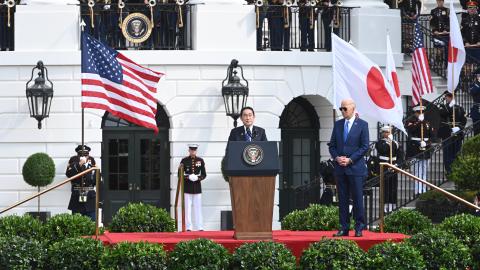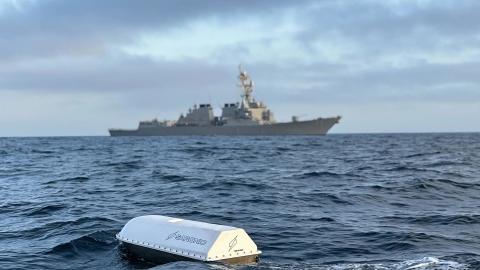The Pentagon’s Defense Innovation Unit recently requested proposals for small, unmanned surface vehicles that could attack enemy ships in contested environments. Vehicles like these have shown value against Russia’s Black Sea Fleet and could create the “hellscape” that Adm. Samuel Paparo, Pacific Fleet commander, wants to use should China invade Taiwan.
But realizing the potential of these robotic boats and other unmanned systems will depend on integrating them with each other and the rest of the force through command-and-control tools, data and network architectures. With integration, manned and unmanned units can be composed in a greater variety of ways to support a growing diversity of tactics. Without integration, drones provide mass that lacks adaptability or resilience.
To sustain the Navy’s maritime advantage, the Defense Department will need to increase the options available to commanders by expanding the unmanned portion of the force. This will accelerate the ongoing shift of U.S. forces from the human-centric communication that dominated the 20th century to the machine-to-machine communication we experience today. Therefore, unlocking the capabilities of unmanned systems will require the department to pursue software solutions that enable unmanned systems to seamlessly coordinate individual actions while executing a shared task in contested environments.
Software is increasingly the enabler of military capabilities and often the key factor for integrating new technology into the Joint Force. However, historically the Defense Department has struggled with joint integration, which composes systems from multiple services into effects chains or mission threads.
Instead, the Pentagon attempted to solve its integration problems through new global standards and focusing primarily on long-term technology development instead of integrating existing systems in ways that solve the key operational problems identified by commanders today.
To provide insight into the path toward joint integration, the Hudson Institute’s Center for Defense Concepts and Technology and the National Defense Industrial Association’s Emerging Technologies Institute organized a symposium in December 2023, which brought together the Defense Department and industry to discuss the technical enablers and barriers of joint integration. A follow-on report has been released and is available on both the Hudson Institute and ETI’s websites.
Of the many takeaways from the symposium and report, several stand out as the most actionable.
First, military forces depend on adaptability to gain a decision-making advantage over adversaries. The U.S. military can enhance adaptability through “deferred concretization,” or a modular approach, which refers to delegating key integration decisions and activities to the field and relying on distributed systems of systems.
This allows for greater flexibility and adaptability by accommodating the evolving needs of defense systems, eliminating data silos and fostering a more connected maritime ecosystem. This approach contrasts with the Pentagon’s traditional methods of achieving interoperability via early standardization and up-front requirements.
Second, because the Defense Department may not be able to predict every kill chain or force package it will need to employ, military forces would benefit from on-demand interoperability via continuous integration and delivery pipelines or tools that allow systems with varying data formats and interfaces to exchange information.
One example of this is the System-of-systems Technology Integration Tool Chain for Heterogeneous Electronic Systems, or STITCHES program, which grew from past funding by the Defense Advanced Research Projects Agency. The STITCHES tool contrasts with the Defense Department’s traditional reliance on pre-established global standards for interoperability and recognizes that the core technical challenge is creating efficient integration between heterogenous computer systems.
Software integration tools like STITCHES have demonstrated their utility — for example, by integrating between the F-35’s APG-81 radar and DARPA-developed automatic target recognition software to reduce operator workload and create a comprehensive picture of the battlespace.
Third, the Hudson-ETI symposium highlighted the need for the department to adopt “mission-centric integration.” This approach would shift the focus of joint integration from system development for future interoperability to integrating for mission execution using technology available today. Rather than attempting to achieve broad technological or system interoperability through global standards, mission-centric integration emphasizes organizing integration efforts around shared mission problem statements, like specific kill chains, system-of-system compositions, or mission threads.
In an Indo-Pacific scenario, the sheer distance limits the ability of one service to take control of the battlespace, which necessitates a priority on closing kill chains. Mission-centric integration takes a bottom-up approach, where interoperability is achieved by using existing elements and encourages subsequent refinement to address near-term operational challenges, such as establishing a minimum viable kill chain.
Collectively, these three ideas represent a significant shift in thinking about military system integration. Each theme highlights the value of a data-centric approach, where decision-making and strategy implementation is contingent upon the quality and accessibility of data. The Defense Department’s recent shift in focus for interoperability from network to data compatibility is a step in the right direction, but successful implementation will hinge on close collaboration between the DoD and a diverse swath of the commercial and traditional defense industrial base.














